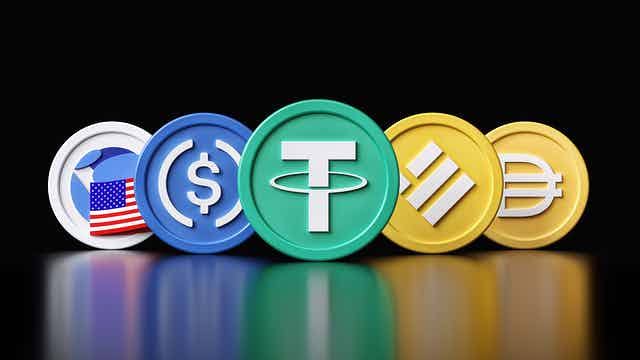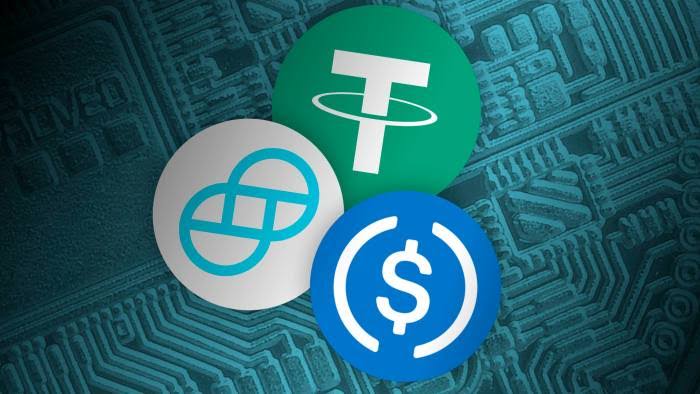If you have been hearing about stablecoins, you might be wondering if they belong to the crypto class, and how their prices remain stable.
If that’s the case, then you are not alone, I also wondered too.
Cryptocurrency as a volatile digital asset is being traded with risk in mind, even though the volatility is being leveraged by traders for profit making.
However, the volatility makes it not fit for all business purposes.
For instance, Volatility makes trading lucrative but crypto holders don’t fancy it, especially when the asset price goes south.
Also, in terms of common crypto transactions, crypto volatility is a set back.
This is why stablecoins were created, to provide an alternative to the price volatility of other cryptocurrencies.
In this article, we discuss stablecoins while answering frequently asked questions.
What is a Stablecoin?

Stablecoins are cryptocurrencies with a pegged value to that of a currency, commodity, or financial instrument.
Simply put, stablecoins are cryptocurrencies that retain the value of any currency they are pegged to, thus having a 1:1 ratio.
The pegging nature of stablecoins make them less volatile than normal cryptocurrencies, making them suitable for common transactions, unlike their kind.
What is special about Stablecoins?
The unique properties of stablecoins makes them a better alternative to other coins when it comes to some particular functions:
- For common transactions: While cryptocurrencies have long-time volatility, some still undergo intraday price volatility, making them unfit for merchant deals. For instance, all merchants will feel bad if there is a decline in the price of a token after accepting it as payment. To remedy this, stablecoins should be used as a form of payment in common transactions since they are volatility-resistant.
- Regulation Friendly: Regulatory bodies continue to sting the crypto space because of the high volatility attached to digital assets. Apart from regulations, the higher the volatility of any asset, the higher the risk involved in trading the asset class. Unlike other cryptocurrencies, stablecoins are regulation friendly as they are seen as the digital currency of money.
- Easy to Adopt: Stablecoins can be easily adopted in any financial institution as a payment form, since they always retain the value of the pegged currency. Also, their regulatory-friendly nature makes them easily adopted in any financial sector.
- Collateralized: You might be wondering for the second time, what is responsible for the stableness of this asset class? The answer is Collateralization, stablecoins are collateralized; they are backed by either fiat, crypto, or any financial instrument. Their backup is what makes them able to secure the value of the currency they are pegged to.
Types of Stablecoins
Depending on their collateralized structure, many stablecoins exists.
Their collateralized structure will make investors choose the best for them or their needs.
Let’s take a look:
Fiat-Collateralized Stablecoins
These are the most used stablecoins, they are backed and pegged to fiat currencies like the US dollar, and EUR, all in a 1:1 ratio(1 stablecoin is equivalent to the fiat currency).
Fiat currencies are what assures the value of these stablecoins.
This means that the stablecoin will ideally retain the value of the fiat currency in a 1:1 ratio.
However, since the collateral(fiat) is not crypto, these stablecoin class are called off-chain stable coins as they have a central issuer(centralized).
This fiat collateral (USD, EUR, etc.) is kept in a reserve with a central issuer, and at all times, the number of fiat currencies must remain proportional to the number of stablecoins in circulation.
For example, if there are 1 million stablecoins in circulation, the issuer must have $1 million in fiat currency, in the reserve; this is the reason for stableness and volatility resistance.
Some examples of fiat-backed stablecoins are USDT, TUSD, BUSD, etc.
Crypto-Collateralized Stablecoins
Crypto-collateralized stablecoins are backed by other cryptocurrencies, unlike the fiat-collateralized.
Since they have no central issuer, they are called on-chain stablecoins because of their decentralized nature.
However, since cryptocurrencies are volatile, the reserve cryptocurrency is also volatility prone, therefore these stablecoins are over-collateralized; the reserve cryptocurrency must be more than the number of stablecoins in circulation.
For example, if there are 2 million stablecoins in circulation, the issuer must have $4 million worth of the cryptocurrency in the reserve.
How is this achieved?
I’m sure you had this question in your minds.
When buying a crypto-backed stablecoin, you’re technically locking your cryptocurrency into a smart contract to have stablecoins of equivalent value.
To get back your cryptocurrency, the stablecoin is dropped into the same smart contract, and the original collateral amount becomes ready to be withdrawn.
Some examples of crypto-collateralized stablecoins are WBTC, DAI, etc.
Algorithmic Stablecoins
This a more complicated stablecoin class. They are not collateralized by either crypto or fiat.
Instead, their stability is maintained through algorithms and smart contracts that manage the supply of tokens in circulation.
Algorithms are computer programs running on preset formulas; these programs work hand in hand with the law of supply and demand – an increase in supply leads to a decrease in price and vice versa.
How is it achieved? I still got you…
For example, when the price of the stablecoin goes beyond the price of the fiat currency it follows, new tokens will be brought into circulation(increase in supply) to reduce the stablecoin value.
In another trend, when the price of the stablecoin falls below the price of the fiat currency it follows, tokens will be removed (decrease in supply) from circulation to stabilize the price.
Commodity-backed
This stablecoin class is not really common currently. it is backed by physical assets like precious metals, oil, properties, and land holdings.
However, the prices of these mentioned commodities are also volatile, which could lead to value loss.
Anyways, these stablecoins can be used to facilitate investments in assets that might not be available locally.
For example, such stablecoins can be featured in countries where it is difficult to locate, purchase, and store assets like bars of gold and silver.
The best type of Stablecoin
I’m sure you had this question in mind also, I caught you right?
All stablecoin classes are valued in their own way.
Depending on your trading need or position, you can choose a particular type over the other.
However, in terms of number of users and market capitalization, Fiat backed-stablecoins are the most used stablecoins in the world currently.
Tether (USDT) is currently the most popular and largest stablecoin by market capitalization, followed by USD Coin (USDC).
The Risk in Stablecoins
Are you surprised?
I’m sure you thought their volatility-resistance shields them from risk, right?
I thought same too though, but you know everything has a significant amount of risk attached to it.
Below are the risk attached to stablecoins;
- The ones that are crypto-backed have volatility problems: Crypto-backed stablecoins can be subjected to high amount of volatility that may worry beyond the strength of reserves.
- The Fiat-backed can have decentralization problems: Centralization has become a problem in the crypto space. For example;
-
- They can be subjected to human error, and the owner of the reserve might refuse to redeem assets.
- Also, there may be no proof of reserve and that’s a major concern in the crypto space.
-
- Algorithm stablecoins can be treated as a Ponzi scheme, where new tokens are only created through new users depositing collateral, so when users stop depositing, the system tumbles. This means that new users crypto can be used to pay old users, and the system finally crashes when new users stop signing up.
Conclusion
The importance or significance of stablecoins cannot be over emphasized.
If you still have your bias, the comment box is open.
